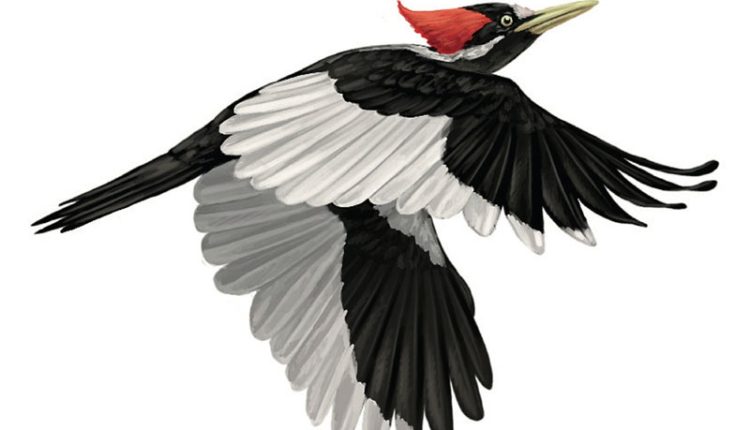Bibhuti Pati
Determining the absence of a species can be quite challenging. Consequently, extinction lists globally are often the subject of intense discussion, counterarguments, and urgent inquiries. A notable pitfall in this context is referred to as ‘The Romeo Error’.
To elaborate on this concept, the Romeo Error describes a situation where a species presumed extinct—much like to the Romeo and Juliet play by Shakespeare. Romeo gave his life under tragic circumstances because he believed that the unconscious Juliet had passed away. However, Juliet is revealed to be alive at the end, just as in the play. The misconception of its extinction can lead to dire consequences for both the species and its ecosystem. When a species is mistakenly declared extinct and is later rediscovered, financial support typically diminishes significantly, as does public interest, which can result in neglect of its habitat.
Despite a beautiful attractive name, the Romeo Error carries serious implications. According to P Jeganathan, a wildlife biologist said, “Erroneously declaring a species extinct could lead to its actual demise, simply because stakeholders may give up on trying to save it.”
So, how can one ascertain the status of a species? The International Union for Conservation of Nature (IUCN) stipulates that a species may be classified as extinct only when there is “no reasonable doubt that the last individual has died.” Unfortunately, in some instances, this reasonable doubt is becoming increasingly easy to eliminate as vital habitats continue to deteriorate.
For example, two new species of stingless bees from Tanzania and Madagascar were recently identified from specimens collected over a century ago. Scientists had previously assumed these species to be extinct due to the drastic changes in their original habitats.
In many regions, however, reasonable doubt persists. Few countries possess the resources and personnel necessary to conduct the comprehensive surveys mandated by the IUCN to monitor even the most well-known endangered species. This task is particularly daunting for larger mammals and becomes increasingly challenging for smaller, nocturnal species or those inhabiting inaccessible environments.
One repute bird watcher and photographer MamataParmar suggests that a shift away from a heavy reliance on enumeration is necessary. He emphasizes the importance of conserving entire habitats rather than concentrating solely on individual species. A healthy habitat inherently reduces the risks faced by its species and facilitates their detection.
Prof. Sanjay Sane said, “Underscores the necessity of long-term surveys. He notes that these surveys require extended funding periods, as the typical government funding cycle in India lasts three years, while a comprehensive long-term survey should span at least a decade. Additionally, leveraging student-level research could prove beneficial. For example, agriculture students perform systematic surveys as part of their academic curriculum, yet much of their research remains underutilized and neglected”.
The limited understanding, we possess regarding the natural world underscores the necessity of extensive data collection from various sources. According to a frequently referenced and fairly accurate statistic, contemporary science has identified merely 14% of Earth’s species, with only 9% of those residing in marine environments. It is estimated that there are approximately 8.7 million species worldwide.
The IUCN Red List currently enumerates 150,388 species at risk, derived from those that are known and thoroughly studied. These species are categorized into nine classifications: Not Evaluated, Data Deficient, Least Concern, Near Threatened, Vulnerable, Endangered, Critically Endangered, Extinct in the Wild, and Extinct. Additionally, wildlife agencies in various countries monitor and document extinctions.
Environmentalist TapanPadhi says, “We are currently experiencing a sixth mass extinction, which is primarily attributed to human activities rather than geological changes or natural disasters. In light of this situation, it is imperative to adopt a comprehensive approach to evaluate our current status, monitor and avert extinctions, and identify endangered habitats that require protection, ultimately safeguarding our own future. Furthermore, it is essential to acknowledge and celebrate the successes in species recovery”.
In 2021, four species of commercially fished tuna were downgraded on the IUCN list of most-threatened species, thanks to the implementation of stricter regulations and improved enforcement measures. In another positive development, a species once thought to be extinct is undergoing re-evaluation, igniting enthusiasm among biologists and bird enthusiasts in the United States.
The ivory-billed woodpecker, is a striking black-and-white bird adorned with a vivid red crown, affectionately referred to as the “Lord God” Bird due to the awe it inspires upon sighting. The last confirmed sighting of this bird occurred in 1944, and it was nearly removed from the list of protected species this year, as the US Fish and Wildlife Service planned to declare it extinct. However, a study conducted by researchers at the National Aviary in Pittsburgh, published in the journal Ecology and Evolution, has reignited interest in its status.
The presentation included drone footage, audio recordings, and images captured by trail cameras over a span of ten years, demonstrating an “intermittent but repeated presence” of the bird. The Fish and Wildlife Service is currently reevaluating its previous decision. This situation underscores the critical significance of data, collaboration, and innovative strategies, as well as the complexities involved in declaring a species extinct—regardless of whether it is a single species or one that is already familiar to us.

